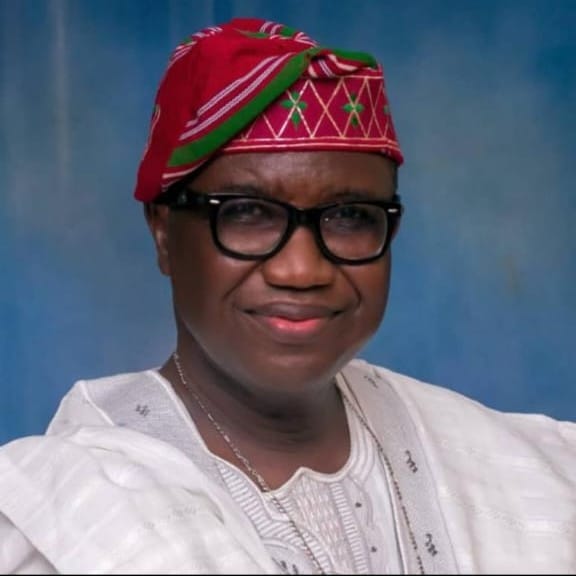Hours after the inspiring story of an 86-year-old artist, Emmanuel Olagundoye Abejide, based in Ilasa-Ekiti, was published in MyTori, a former bank executive, Folorunso Akiyode, has rolled out a To-Do list for the Ekiti State Government – to boost tourism.
In his comment on a post on Abejide in the professional networking site, LinkedIn, Akiyode, who was a top Nigerian bank’s chief credit officer, wrote.
“The Ekiti State Government has been speaking about developing the State’s tourism potential. This is one low-hanging fruit for development. It’s an already polished gem, waiting for exposure and display. As a start, the State should bestow Mr. Emmanuel Abejide with a State Honour.
“Secondly a section of the Ìkogòsì Warm Spring Resort may be set aside and developed with a display of Mr. Abejide’s art collections alongside other prominent indigenes in that genre.
“Thirdly, an Art Incubation Hub may be established at Ilasa-Ekiti as a legacy to Mr. Abejide, wherein aspiring artists can come and drink from the fountain of his knowledge and experience.
“Fortunately, he has an Artist/Art Lecturer daughter who can assist to co-ordinate and develop the Centre even after Papa finishes running his earthly race at this time. These are just a few random thoughts, but I’m certain that Ekiti State Government can do much more.”
According to Akiyode: “(Abejide’s)Gallery of Artwork is a veritable mine of non-oil income, through a structured tourism program by the Ekiti State government.”
In Obe’s post which drew Akiyode’s comment, The Journalism Clinic’s founder suggested that the State Government could seek the support and assistance of the World Tourism Organization and UNESCO, if need be.
State Scholar
Abejide, 86, retired from the National Commission for Museums and Monuments (NCMM) in 2000, as a curator at the National Museum in Kaduna – after 26 years in service.
While at Ahmadu Bello University (ABU) Zaria, he was declared best in class at the end of the first year (June 1965); by January 1966, he became a State Scholar, meaning that the Federal Government had taken over responsibility for his fees.
“I bagged a Bachelor of Art in fine arts from ABU, Zaria in June 1968, among the second generation of Nigerian Artists,” Abejide says in MyTori, publication of The Journalism Clinic run by Taiwo Obe. “The first generation included Yusuf Grillo and Bruce Onobrakpeya, but you know that they were at the College of Arts and Technology which was not degree-awarding. They were called the Zaria Rebels.”
Living Legacies
After graduation, Abejide received automatic Federal Government employment and was offered the position of ethnographer. His first posting – in 1972 – was to Owo, where he start the museum that is still operational inside the premises of the Olowo of Owo.
Abejide remembers that period of his life with nostalgia. “I spent six years in Owo. I mounted the first gallery there. You cannot talk of the National Museum, Owo, without mentioning Abejide. The same thing with the museum in Akure. I started this in 1988. As the officer in charge of the museum in Akure, I fenced the petroglyphs monument in Igbara Oke in 1989.”
Besides Owo and Akure, he also worked at the national museums in Jos and Ibadan.
In 2021, he was given the Legendary Award at the National Art Festival (NAFEST). This is the why Akinyode states that he should be awarded a State Honour by the Ekiti State Government.
Abejide says that he became an artist by chance, but his natural talent was evident early on, right from when he was a pupil at St. John’s (and later at St. Paul’s Primary School ), Ikole-Ekiti. And as a student at the Ekiti Teachers’ College, Ikere-Ekiti, where he earned a Grade III teacher’s certificate, his artistic brilliance earned him preferential treatment.
“It was an advantage to be able to sketch and I was known to do it well,” Abejide states in the piece. “So, when my classmates would be given portions of grass field to cut at manual labour hours, I was put in the Prefects’ Room, drawing and lettering for them, particularly when they were preparing for Practical Teaching.”
Art, art everywhere
It was at the same college that he would create a new artistic style. As part of class work, according to the retired curator, students drew on glass and covered the back, the exact opposite of mirror art.
“It was through that method that I knew that I could easily scratch the back of a mirror for any effect I want. So, I became the originator of mirror art in Africa,” he says.
Awofeso is a culture and tourism writer and a winner of CNN/ Multichoice African Journalist Awards (Tourism reporting)
https://drive.google.com/file/d/1M6bs2C8fN1mqvP3_tFjhnxSTP9bMlFj1/view?usp=drivesdk
WATCH TOP VIDEOS FROM NIGERIAN TRIBUNE TV
- Let’s Talk About SELF-AWARENESS
- Is Your Confidence Mistaken for Pride? Let’s talk about it
- Is Etiquette About Perfection…Or Just Not Being Rude?
- Top Psychologist Reveal 3 Signs You’re Struggling With Imposter Syndrome
- Do You Pick Up Work-Related Calls at Midnight or Never? Let’s Talk About Boundaries






